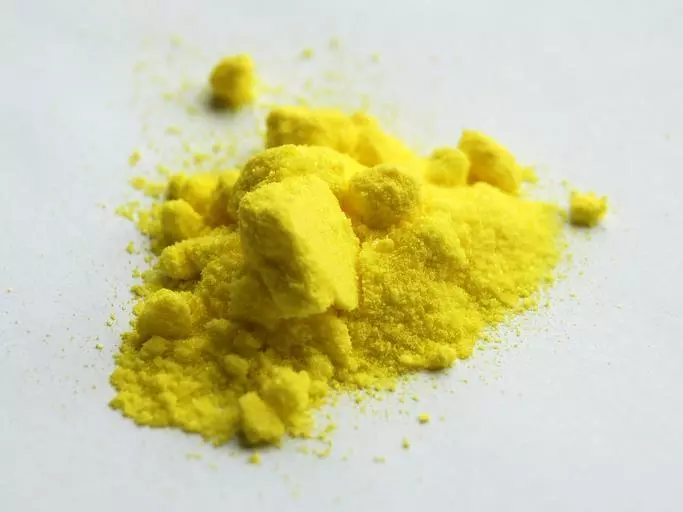What is Potassium Chromate?
Potassium chromate is an inorganic substance that needs to be handled with care. As you may have been able to work out, it is a potassium salt which consists of both potassium and chromate ions – with double the amount of potassium compared to chromate.
There are many uses for potassium chromate, mainly in manufacturing. The most common use is in the textile dyeing process, and also in the manufacturer of dyes. It can also be used to help with chemical analysis, mainly where you need to use anhydrous salt, or as an indicator, as it changes colour in the presence of an influx of silver ions.
As potassium chromate is quite expensive and dangerous to produce, it is only generally used when there is no alternative – for example when sodium salt is not suitable.
The chemical formula for potassium chromate is K2CrO4. While it is largely produced in laboratories, it does actually still occur occasionally in nature, but only in a few spots of the Atacama Desert, in South America. This is in it’s mineral, natural form of tarapacaite.
The dangers and risks that potassium chromate present, though, mean that its use is relatively rare and, when it is used, certain strict precautions need to be taken.
Potassium Chromate Hazards
Potassium chromate is a hazardous substance and poses many serious health risks to humans. Without extreme care and caution, you could be at risk to any one of the following health effects.
For a start, just touching potassium chromate can cause problems – there may be some inflammation, or it could exacerbate any pre-existing skin conditions. While contact with the skin may not cause long-term health effects, if potassium chromate gets into any wounds, abrasions or lesions, it can cause systemic injury with extremely serious effects.
You will need to wear a mask when you are in contact with potassium chromate, because if inhaled it could cause, at the very least, respiratory irritation. Your body will respond to this, and that response in itself could go on to cause damage to your lungs. Furthermore, if you happen to suffer from any respiratory conditions, you may find that they are increased with contact with potassium chromate. Even if you don’t have a pre-existing condition, potassium chromate has been known to cause asthma, bronchitis, shortness of breath, pneumonia and ulcerations.
If accidentally ingested, potassium chromate could kill you. If it doesn’t, it is likely to cause severe health problems, like kidney damage, blood cell damage, inflammation of the digestive tract or severe abdominal pain. I’m sure this goes without saying, but don’t ingest potassium chromate.
Long-term exposure to potassium chromate can cause a few different problems, not least respiratory issues. There is evidence to suggest that it can cause genetic defects that can then be inherited, and, on top of this, it is carcinogenic and can cause cancers.
Potassium Chromate Reaction
While potassium chromate is a stable substance under regular pressures and temperatures, it is a very strong oxidiser. What this means is that contact with other materials may cause a fire.
If this happens, the fire will be very difficult to put out and may release highly toxic fumes. You cannot put a potassium chromate fire out with foam or dry chemicals, you must use water to flood the source of the fire.
Colour of Potassium Chromate
Potassium chromate is yellow in colour. The colour comes from the chromate ion. When nitric acid is added to the substance, it begins to turn orange, like the dichromate ion. The more acidic it becomes, the more orange it becomes.
As it is a powder, the yellow colour makes potassium chromate a very distinctive substance.

How Ideal Response Can Help
As you will have gathered from the information above, potassium chromate can be an incredibly dangerous substance. If you find yourself with a major spill of this hazardous powder, you are going to need a team of experts to make sure that it is dealt with efficiently and safely.
That’s where Ideal Response come in.
Not only will we send our highly experienced team of experts, with their state-of-the-art equipment, to help clean the spillage, but we also understand the importance of the disposal of hazardous materials such as potassium chromate, and will be able to handle any size of spill with our typical skill and speed.
A chemical spill like this can stop everything – whether it is a manufacturing process or valuable scientific work – so you are going to want to get everything back to normal as quickly, and as safely, as possible – our rapid response team are available 24 hours a day, and can be on-site within 2 hours of your call.
Don’t let the dangers of potassium chromate cause you to lose any more time and money than it needs to following a spill. Get in touch with Ideal Response immediately and let us take care of it for you.



